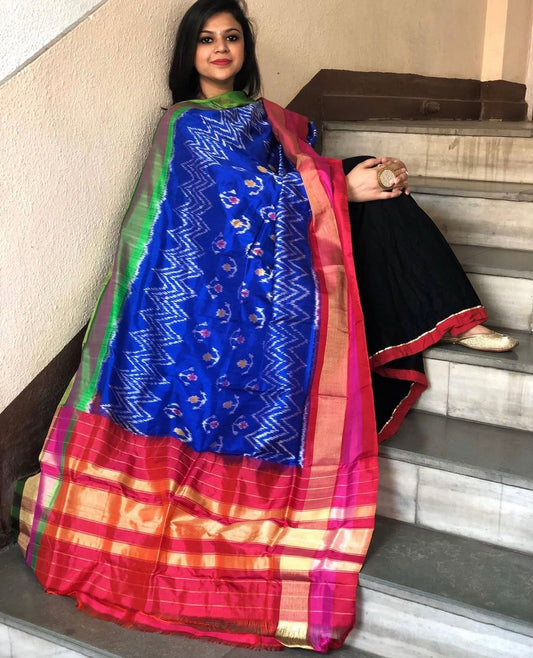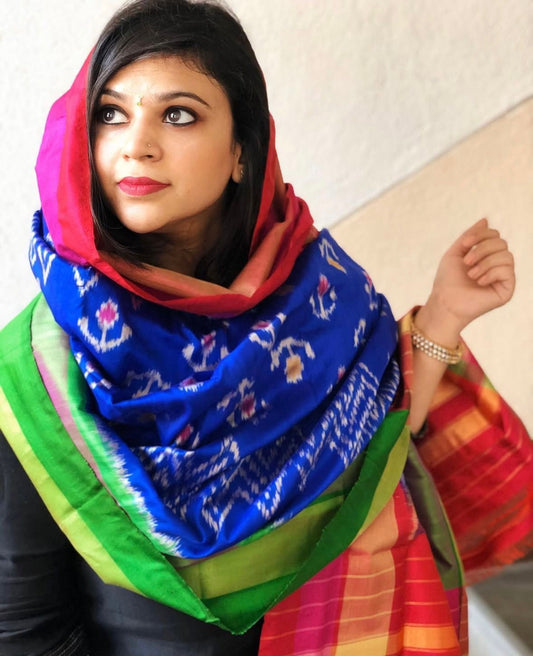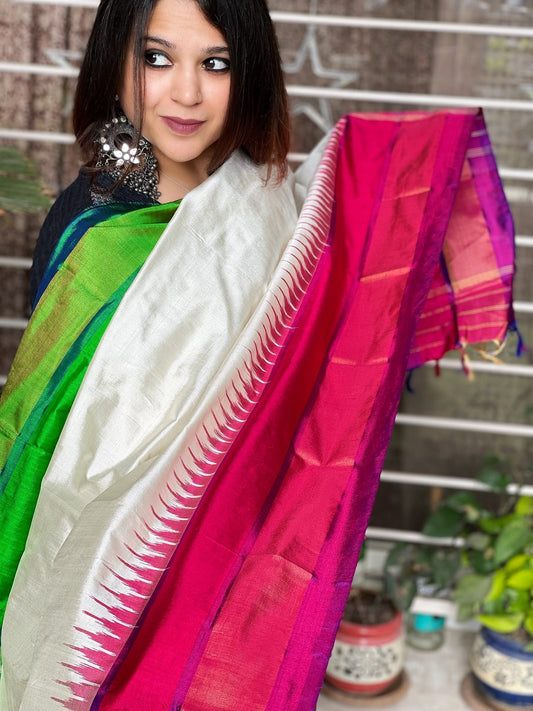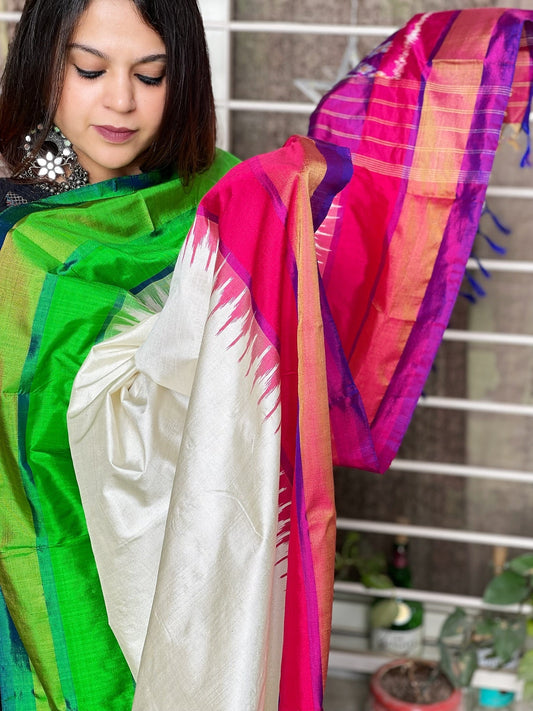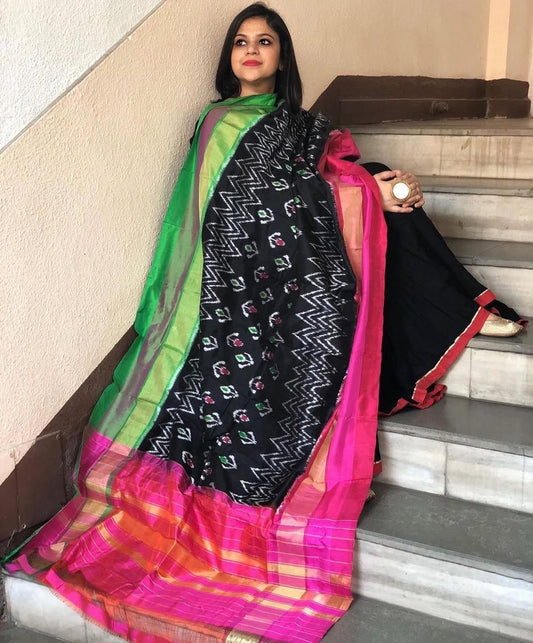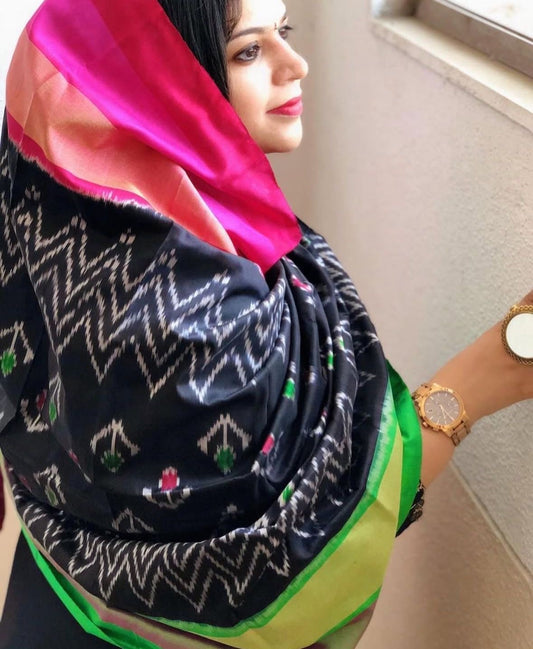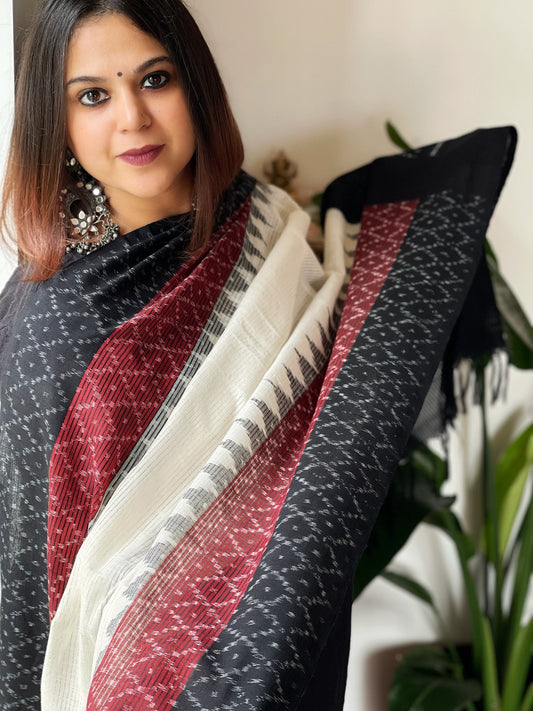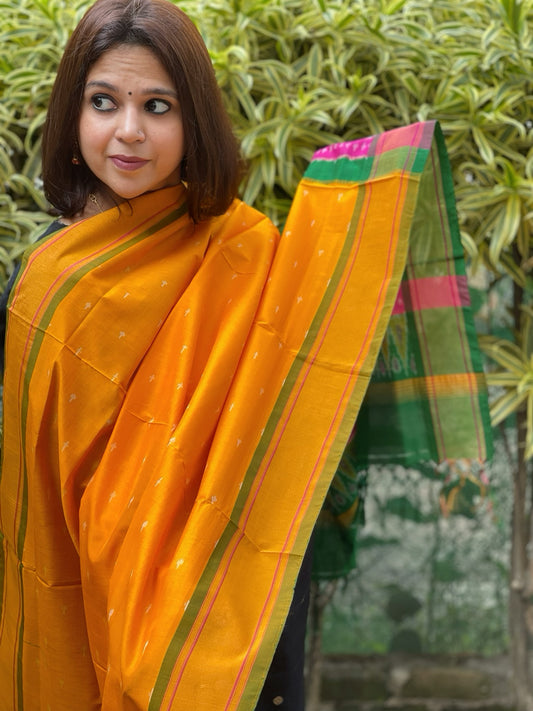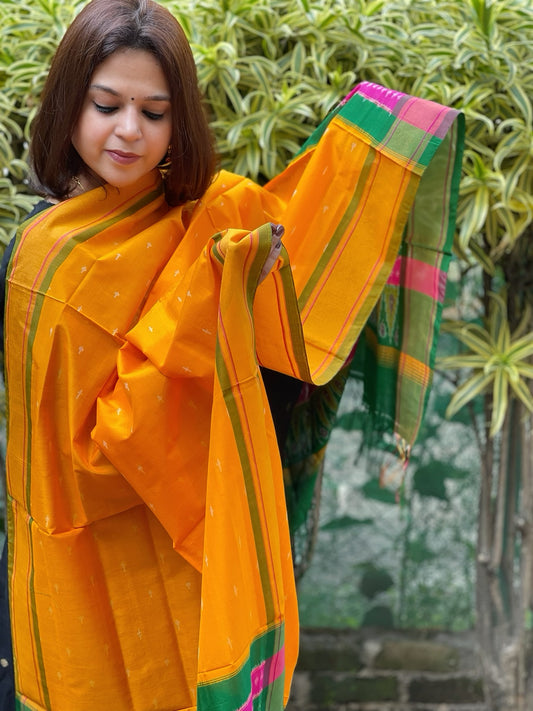Ikat cotton dupattas capture the heart of Indian traditional wear with their exquisite designs and unique textures. These pieces of artistry stand out for their vibrant hues and visually striking patterns, which seem to dance lightly across the fabric. Whether draped over a simple kurta or paired with a festive lehenga, these dupattas add a touch of elegance to any ensemble. However, many ikat enthusiasts notice that the patterns might seem a bit misaligned. This characteristic often leaves people wondering why such a stunning craft would have what might appear as an imperfection.
The world of ikat is rich with history and craftsmanship that deserves exploration, especially to understand the nuances behind these pattern quirks. Far from being flaws, these misalignments are the product of an intricate weaving process steeped in tradition. Knowing the reasons behind the patterns can deepen your appreciation for ikat cotton dupattas and help in recognising the unparalleled skill involved in crafting these textiles.
Origin of Ikat
The name "ikat" finds its roots in the Malaysian word "mengikat," which means to tie or bind. This ancient art form likely originated in regions such as Odisha, Gujarat, and Andhra Pradesh, each contributing their unique styles and techniques. Over the centuries, ikat has become integral to Indian textile heritage, celebrated for its cultural significance and mesmerising beauty.
Ikat's history stretches back hundreds of years, with references to similar techniques found in early trade documents. The craft flourished under various dynasties, each advancing the technique with its own distinctive style. For instance, the weavers of Gujarat are known for their double ikat technique, which involves dyeing both the warp and weft threads before weaving. This advanced method demands a high level of attention to detail and years of practice, making it a revered tradition.
The cultural impact of ikat is evident in its continued popularity and the pride artisans take in preserving their forefathers' methods. By understanding the historical impact and regional influences, one can better appreciate the ikat patterns seen on cotton dupattas today. Each piece is more than just fabric; it's a narrative of a community and its history, narrated through a vibrant play of threads and colours.
The Craftsmanship Behind Ikat Cotton Dupattas
Creating an ikat cotton dupatta is a labour of love involving multiple stages, each requiring incredible skill and patience. The process begins with selecting quality cotton threads, which are then tied and dyed according to the desired pattern. Artisans carefully tie sections of the thread with a resist material like rubber or plastic to prevent dye penetration. This tying is crucial as it determines how the final design will appear on the textile.
Once tied, the threads undergo a series of dye baths, with each addition adding depth and complexity to the eventual pattern. The artisans must carefully calculate the colours and timing to achieve the vibrant hues ikat is known for. After dyeing, the threads are carefully untied and placed on a loom, where they are woven into the final fabric. This stage requires a sharp eye to align the dyed patterns correctly and to ensure that the intended design comes to life.
The entire process is not only time-consuming but also demands a high level of expertise. Weavers must be intimately familiar with the behaviour of dyes and threads, often working long hours to ensure precision. The dedication of these artisans can't be overstated, with some pieces taking weeks to complete. Their commitment to maintaining the integrity of this age-old craft is evident in every ikat cotton dupatta, where each thread tells its own part of the story.
Why Do Ikat Cotton Dupatta Patterns Appear Misaligned?
Ikat cotton dupattas are celebrated for their distinctive patterns, but these patterns can occasionally seem misaligned. This characteristic stems from the very nature of the ikat technique itself, which involves a complex dyeing and weaving process. The dyeing stage includes tying sections of the thread to create a resist pattern. When these threads are dyed and then untied, the pattern temporarily appears on the strands before they are woven into fabric.
During weaving, the challenge lies in perfectly aligning the dyed threads to match the intended design. Given that the threads have undergone multiple dye baths and been handled extensively, slight shifts can lead to the appearance of misaligned patterns. Far from being errors, these variations are evidence of the hand-dying process that makes each dupatta a unique piece of art.
Several factors contribute to this charming inconsistency:
- Hand-Dyeing Process: Artisans tie and dye each thread manually, making precision challenging yet keeping the tradition alive.
- Alignment in Weaving: Getting the exact alignment during the weaving of pre-dyed threads is quite complex.
- Natural Fibres: Using materials like cotton, which can stretch or contract based on climate, affects consistency.
These points explain why ikat dupattas might not show perfect symmetry. Such variations are typical of handcrafted items, adding character and authenticity to each piece.
Embracing the Beauty of Imperfection
The differences in ikat patterns should be embraced rather than overlooked. These imperfections are not flaws but features that highlight the human touch involved in each creation. They remind us of the skilled weavers who dedicate their lives to mastering such techniques.
Handcrafted ikat textiles are appealing and celebrated for their individuality:
- Unique Patterns: No two ikat dupattas are exactly alike, giving each piece its distinct identity.
- Artisan Craftsmanship: These features tell a story of dedication and traditional skills passed down through generations.
- Cultural Significance: Many regions consider these minor variations part of the craft's charm, celebrating them as a mark of authenticity and heritage.
Embracing these imperfections can enrich one's appreciation for craft and deepen one's connection to artisan communities across India.
Celebrating the Artistry of Ikat Cotton Dupattas
Ikat cotton dupattas represent more than just beautiful accessories; they embody the heart and soul of a rich tradition of Indian weaving. Recognising the effort and passion involved in their creation can lead to a greater appreciation for these remarkable pieces. Each one showcases the creativity and expertise of its artisans, narrating a unique story through its patterns.
By wearing or gifting an ikat dupatta, you participate in this age-old tradition, cherishing the imperfections that make it special. Understanding the artistry behind the misaligned patterns allows for an enriched understanding of ikat textiles and honours the culture and history they represent. Whether you're drawn to their aesthetic appeal or the narrative they carry, ikat cotton dupattas hold a timeless charm that celebrates the beauty of handcrafted textiles.
Celebrate the timeless charm and craftsmanship of ikat by integrating an Ikat Cotton Dupatta into your wardrobe. Each piece offers a unique blend of artistry and heritage, enriching any outfit. Explore Masakalee's collection for a range of exquisite designs that capture the essence of this traditional art form.



